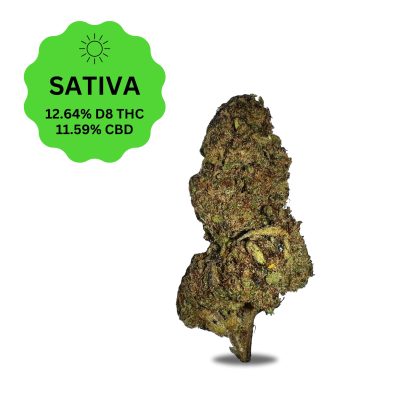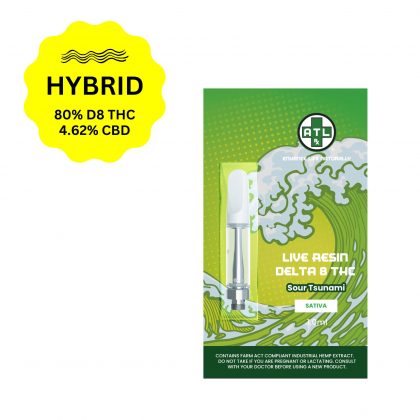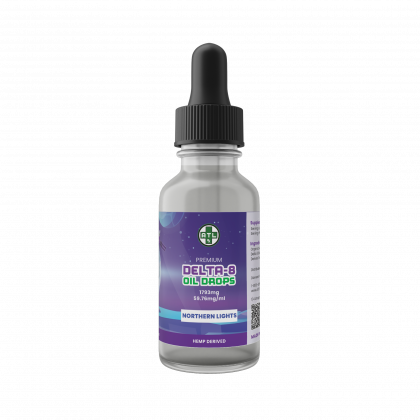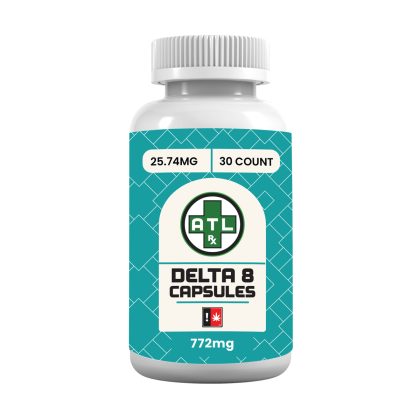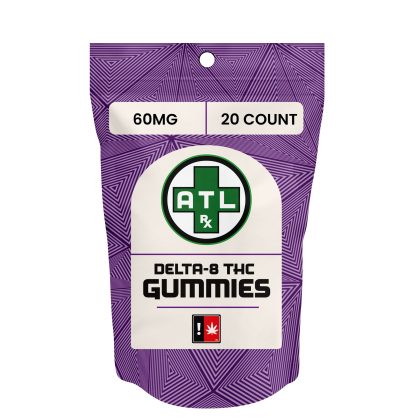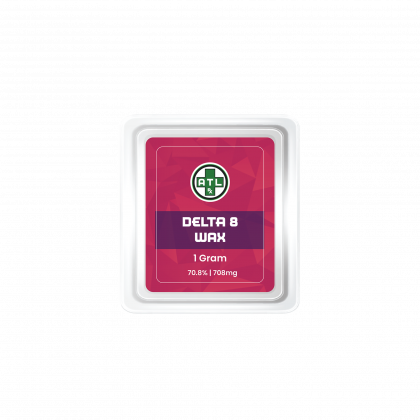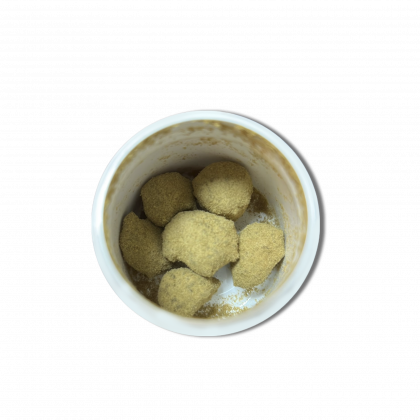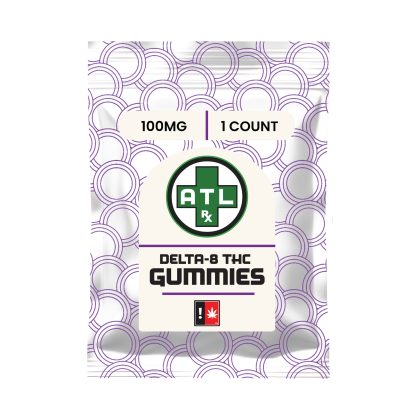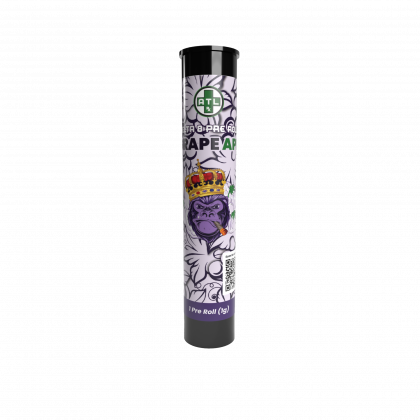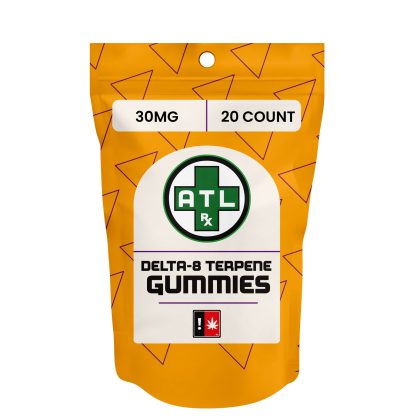Delta 8 THC is a unique cannabinoid that has only recently gained significant popularity. But, would you guess that researchers have known about it since the discovery of THC? Many users have no idea that delta 8 THC has been around just as long as some of your favorite cannabinoids — it just hasn’t been talked about as much.
Today, we’ll take a closer look at delta 8 THC’s history. Here, you’ll learn where it came from, when it was discovered, and even a brief timeline of the history of other cannabinoids.
Let’s get started.
Table of Contents:
- Key Takeaways
- Introduction to the History of Delta 8 THC
- The Discovery of D8
- Where Did Delta-8 THC Come From?
- Research into THC
- Timeline: A History of Cannabinoid Discoveries
- Timeline: The Boom After the 2018 Farm Bill
Key Takeaways
- Delta-8 THC, discovered by Roger Adams in the early 1940s, predates many other cannabinoids and was the first cannabinoid to be researched and synthesized, highlighting its longstanding but underrecognized significance in cannabis history.
- The development of methods to synthesize delta-8 THC from delta-9 THC through oxidation has revolutionized research, enabling scientists to study the cannabinoid in greater detail due to increased availability.
- The 2018 Farm Bill played a pivotal role in the legal landscape of cannabinoids in the U.S., legalizing hemp and sparking a surge in the popularity and market presence of CBD and delta-8 THC products.
- Ongoing research and discoveries, such as the identification of the endocannabinoid system and new cannabinoids like THC-P, demonstrate the dynamic and evolving nature of cannabis science, pointing to a future with potentially more significant findings.
Introduction to the History of Delta 8 THC
Delta 8 THC is a natural cannabinoid found in cannabis plants. Naturally, it’s only present in small amounts; however, we’ve now been able to extract and isolate the cannabinoid. But, this kind of process has only been happening for the past few years, as not many people understood — or even knew about — Delta 8 THC.
Interestingly enough, delta-8 THC was actually one of the world’s first cannabinoids, and its discovery dates back to the 1940s — about 20 years before delta-9 THC was first isolated.
-
Delta 8 THC Flower$9.99 – $169.99
-
Delta 8 THC Vape Cartridge$39.99 – $54.99
-
Delta 8 THC Tincture$39.99 – $129.99
-
Delta 8 THC Soft Gel Capsules$79.99
-
Delta 8 THC Shatter (1g)$39.99
-
Delta 8 Gummies 60 MG$24.99 – $79.99
The Discovery of D8
In the early 1940s, an American chemist named Roger Adams was leading a research team at the University of Illinois. During one of their experiments, Adams and his team conducted a partial synthesis of the delta-8 THC. His group was the first to discover — and research — D8 within the cannabis plant, and Adams went on to publish an article regarding the synthesis. Delta-8 THC was the first cannabinoid to be introduced to the world. But Adams and his team didn’t stop here.
Once they found delta-8 THC, they wanted to better understand its properties. They were especially curious about the cannabinoid’s uses. At this time, the team referred to the cannabinoid as “delta-6 THC,” as they weren’t aware that the structure of the cannabinoid actually had its double-bond placement on the 8th atom, not the 6th.
However, it wasn’t until two decades later that researchers finally were able to fully synthesize a delta-8 THC molecule. This accomplishment was led by Israeli organic chemist Raphael Mechoulam — otherwise known as the “father of cannabis.”
From this point, researchers have been studying this cannabinoid tirelessly, attempting to understand the compound’s full potential.
However, despite the fact that delta-8 THC has been on researchers’ radars since the early 40s, we still don’t know much about the cannabinoid. Today, cannabis scientists are continuing to look into delta-8 THC’s characteristics and how they function.
Where Did Delta-8 THC Come From?
As we discussed, delta-8 THC is naturally present in the cannabis plant in small amounts. When the cannabinoid was first discovered, researchers struggled to conduct studies because they could only extract trace amounts from marijuana naturally. However, as time went on, researchers discovered that delta 8 can actually be curated through an oxidation process.
Essentially, when delta 9 THC is exposed to high levels of oxygen for longer periods of time, it starts to transform into the delta-8 cannabinoid, instead. This discovery allows scientists a better insight into the cannabinoid, as they can curate larger amounts to work with and study. No longer are they limited to the trace amounts that marijuana naturally produces.
Research into THC
In general, the THC cannabinoid has been closely researched for years now — since the cannabinoid’s initial discovery back in the 1960s. However, the country has faced myriad obstacles regarding research and clinical trials because of the current illegality that THC has on a federal level. So, while THC has been arounds for decades, we still don’t have the ample information you’d think.
Regardless of the barriers, researchers have been attempting to study the cannabinoid and its properties in various ways. Back in the 70s, researchers decided to take a closer look into cannabinoids like D8, D9, and CBD, seeing how they impacted the functionality of rats. It was with study that they realized more needed to be done.
Then, in 1995, Raphael Mechoulam wanted to see how the delta-8 THC cannabinoid worked.. He conducted an experiment, and found that there was a “100% success rate” with the cannabinoid.
Still, all of this is just the start. We still have so much to know and learn about when it comes to THC; however, this will stay a slow process until cannabis is federally legal and scientists have access to the cannabis they need for large-scale, long-term clinical trials.
Timeline: A History of Cannabinoid Discoveries
We all know that there are far more cannabinoids within the cannabis plant than just delta-8 and delta-9 THC. Over the years, researchers have spent countless hours looking into the complexities of marijuana and the compounds that it is composed of.
Here, we’re giving you a brief timeline into the history of cannabinoid discoveries and important events in the cannabis world.
1940s
It was the early 1940s when researchers finally started getting into the nitty-gritties of cannabis. During this time, chemist Roger Adams and his team at the University of Illinois were becoming the first people to extract cannabinoids. The chemist and his team successfully extracted both THC and CBD compounds, though not much was known about them.
At the time, the team was not extracting pure delta-8 or pure delta-9 THC. Rather, they were just extracting general THC, likely a mixture of the two.
In the 1940s and 50s, the cannabinoid CBN was also discovered. Researchers noted the cannabinoid’s properties, as well as how it acted alongside CBD and THC. But, again, the research here was minimal, and none of these cannabinoids had been synthesized or properly isolated.
1960s
It was during the 1960s (and into the 70s) that cannabinoid research purely exploded. Research shows that this was due to an increase of cannabis popularity in the UK, and the sudden need for more information regarding safety and effects. However, interestingly enough, the studies that were conducted during this time placed a strong emphasis on the plant’s reported psychoactive properties — not therapeutic. Scientists wanted to better understand the “high” behind it all.
Thus, it was in the 60s that researchers were able to pinpoint the differences in the delta-9 THC cannabinoid. It became clear that cannabinoids like CBD and CBN didn’t have psychotropic properties and weren’t getting people high.
Unfortunately, researchers still didn’t know why this was the case. They were able to demonstrate the cannabinoid’s differences, but they couldn’t explain why THC and CBD had such different properties.
1970s
There weren’t many cannabinoids actually discovered in the 1970s; however, a great deal of research was conducted towards understanding the pharmacokinetics and metabolic components of delta-9 THC. Essentially, research was dedicated towards understanding how the cannabinoid broke down in the body and how it functioned within our system. (Of course, this proved challenging, seeing as though we didn’t discover the endocannabinoid system until nearly 20 years later.)
It was during this time that scientists discovered the way that D9 broke down in the liver.
1980s
Before the 80s, there was talk of receptors in the body that accepted and worked with the cannabinoids found in cannabis. However, it wasn’t until the mid-80s where this was proven as a fact. In the 80s, Allyn Howlett’s laboratory at the St. Louis University was able to prove evidence of cannabinoid receptors in the body.
By the time that the 1990s had rolled around, the scientific community knew that both CB1 and CB2 receptors were present in the body. With this knowledge, researchers began successfully cloning CB1 receptors in both rats and humans, while Mechoulam’s lab discovered anandamide — the first known endocannabinoid.
From there, the lab went on to learn more and more about the receptors, eventually discovering the body’s endocannabinoid system as a whole. With the discovery of the ECS, understanding how cannabinoids worked in the body became a whole lot easier.
2000s – Today
Since the discovery of the endocannabinoid system, the cannabis industry has exploded with new information and understanding. Cannabis researchers have spent the past two decades attempting to understand how cannabis’s cannabinoids work, what specific properties they have, and how they impact us long and short-term.
The most recent cannabinoid discovery is that of THC-P, and this cannabinoid was only introduced back in 2019. THC-P, short for tetrahydrocannabiphorol, is another THC derivative; but it’s said to be about 30 times more active than regular D9.
The THC-P cannabinoid was accidentally discovered, too. A team of Italian researchers were using something called advanced mass-spectronomy and liquid chromatography technology to analyze a particular THC sample. The combination of the chosen processes allowed this team to look at their cannabis in a better, more precise way. Thus, they found THC-P.
As we continue to learn more about cannabis, it’s likely that even more cannabinoids will be discovered. You just have to stay on the lookout for any cannabis news updates.
-
Delta 8 THC Wax$39.99
-
Delta 8 Moon Rocks$39.99 – $119.99
-
100mg Delta 8 Gummy$9.99 – $129.99
-
Delta 8 Pre Rolls$9.99 – $12.99
-
Delta 8 Terpene Gummies$14.99 – $49.99
-
Delta 8 Gummies 60 MG$24.99 – $79.99
Timeline: The Boom After the 2018 Farm Bill
Now that we’ve given you an inside look into both the history of delta-8 THC and the history of cannabinoid discovery, let’s take a quick peek into the cannabis boom the world saw post-Farm Bill.
Related Article: Is Delta 8 THC Legal?
2018 – Hemp is Legalized
In late December of 2018, former President Donald Trump made the executive decision to pass the 2018 Farm Bill. This bill directly correlated with the US Department of Agriculture, but it also addressed one major topic: hemp.
The 2018 Farm Bill effectively legalized hemp plants and hemp production in the United States as long as farmers followed strict guidelines the bill presented. Essentially, hemp plants would only be legal if they do not contain more than 0.3% THC. Any more than that and the government considers it marijuana and it is no longer legal.
With this, cannabinoid products also became legal as long as they came from hemp and contained the legal amount of THC.
2019 – A Rise in CBD Popularity
After the 2018 Farm Bill passed, the United States saw a serious rise in CBD popularity. CBD products became available everywhere online, within your local health and wellness stores, and even at your nearest gas station. The CBD craze had just begun.
2020 – The Explosion of Delta 8 THC
While CBD products continued to gain popularity throughout 2019 and into 2020, it was this year that delta-8 THC really got its footing in the industry. Delta-8 THC popularity absolutely exploded throughout 2020, especially for those living in states where cannabis was illegal. At this time, few states had any regulations on the cannabinoid, and it was readily available practically anywhere you went.
As the cannabinoid’s reputation spread, certain states began placing regulations on the cannabinoid. Today, delta-8 THC is illegal in 20 states, with four still actively considering its state status.
2021 – Now – Hemp-Derived Minor Cannabinoids
Today, hemp-derived delta-8 THC is still as popular as ever, but there are also many other hemp-derived cannabinoids that have taken the scene. Options like THC-O, HHC, and THC-P are now making names for themselves in the industry, and they’re become just as well-known as delta-8 THC and CBD.
As cannabis popularity continues to spread across the US, and we learn even more about the scientific properties of its compounds, we’ll likely see even more significant events unfold in our marijuana timeline. After all, cannabis is ever-changing — and we’re always willing to learn.
Related Articles:


